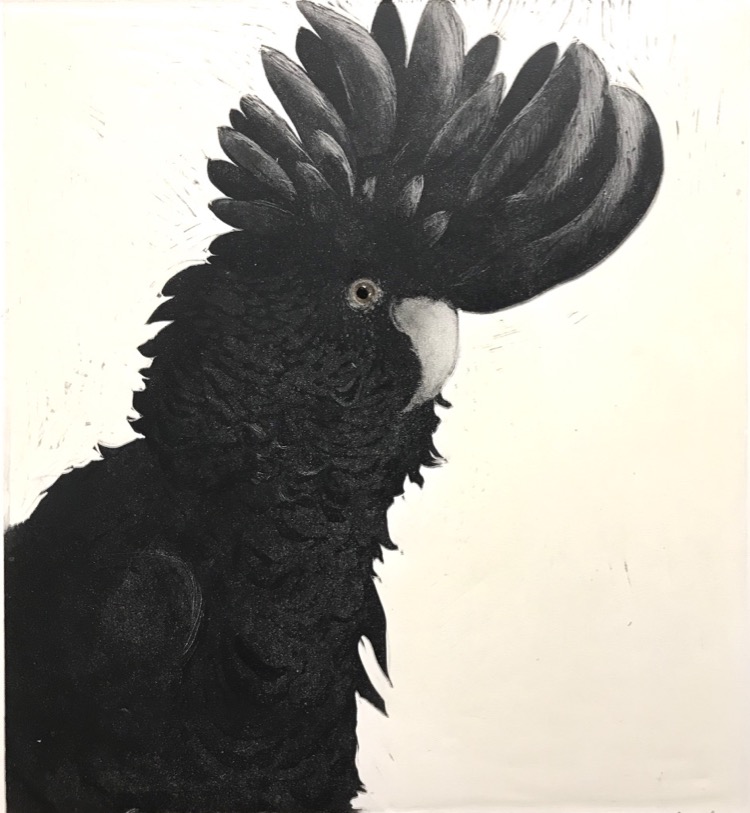

Mature male birds will become aggressive to young male birds at puberty (4 years) they must be separated if caged. Young birds fledge after about 4 months and both sexes have the colouring of their mother. The best time for hand raising is at about 10 weeks when their black feathers are in place but the tail feathers are still short. The eyes of the young open around 3 weeks and the yellow down will show black pin feathers at about 6 weeks. Once the female has one egg in her nest, she will not lay another. The birds breed easily in captivity and can lay eggs every 3 weeks between February and November. However, with an increase in interest in conservation, more aviculturists are concerned about maintaining the integrity of the separate subspecies in cultivation, and so avoid crossbreeding. Birds were often previously bred without much attention to subspecies of origin. Until now, most birds in captivity have been of subspecies C. The red-tailed black cockatoo is the most commonly seen of the black cockatoos in captivity, and can be hardy and long-lived if given plenty of space. Hand-reared birds are able to learn a few words and can be quite affectionate, although males may become imprinted and unlikely to breed. Hand-raised birds can be bought for anywhere between $15,000 to $40,000 in the United States, where they are seldom seen in aviculture. In the late 1990s, red-tailed black cockatoos fetched prices of $1750 in Australia and $8900 (~US$6000) overseas. Of the black cockatoos, the red-tailed is the most adaptable to aviculture, although black cockatoos are much rarer and much more expensive in aviculture outside Australia. Populations in southeastern Australia are threatened by deforestation and other habitat alterations. They are seed eaters and cavity nesters, and as such depend on trees with fairly large diameters, generally Eucalyptus. In the more northerly parts of the country, these cockatoos are commonly seen in large flocks. The species is usually found in eucalyptus woodlands, or along water courses. Although the more northerly subspecies are widespread, the two southern subspecies, the forest red-tailed black cockatoo and the south-eastern red-tailed black cockatoo are under threat. Five subspecies are recognised, differing chiefly in beak size. It is more common in the drier parts of the continent. Adult males have a characteristic pair of bright red panels on the tail that gives the species its name. They also appear to move around in response to seasonal food availability.The red-tailed black cockatoo ( Calyptorhynchus banksii ) also known as Banksian- or Banks' black cockatoo, is a large black cockatoo native to Australia. Red-tailed Black-Cockatoos are described as dispersive, meaning that they move away from where they were born to where they breed and that they may breed in separate locations. The species also occurs in three geographically separate regions in each of: south-west Victoria/south-east South Australia the south-west to west of Western Australia central Australia in southern Northern Territory and northern South Australia. It is then found from there down along the Darling River. Combining these, this species is found from the Pilbara and Kimberleys in Western Australia in a broad swath through the Top End, much of Queensland through to the region of the New South Wales border. There are five subspecies of Red-tailed Black-Cockatoo occurring in eight discrete populations. It can also be found in grasslands and farmlands. The Red-tailed Black-Cockatoo is found in a range of environments, but it is found mostly in Eucalyptus forests or woodlands and often in adjacent areas of woodlands or shrublands, especially if they have experienced fire recently.


 0 kommentar(er)
0 kommentar(er)
